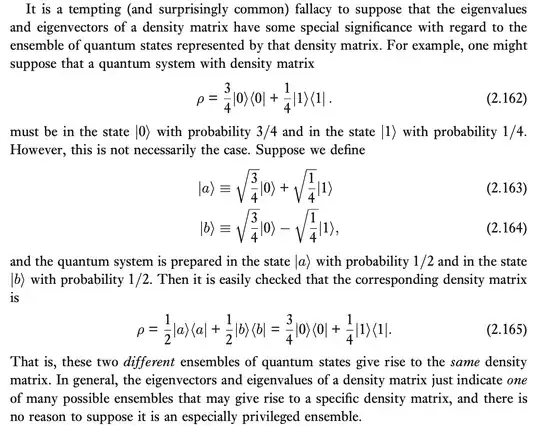I am reading the Nielsen & Chuang section on density matrices and I don't understand the example given to demonstrate a concept. Here is what I am reading:
First, they said these two different ensembles of quantum states gave rise to the same density matrix. Are the two ensembles |a> and |b>? What do they mean by the same density matrix? It looks to me like they formed the density matrices for both of those states (which would be different if shown) and then added them, which equaled some random, artificial density matrix shown above.
Second, the probability of measuring the states is exactly what it says is not necessarily the case (3/4 and 1/4), so I am not sure what this example is demonstrating.
If anyone can clarify what is being said here that would be incredibly helpful. Thank you!
